|
|
|
Sort Order |
|
|
|
Items / Page
|
|
|
|
|
|
|
| Srl | Item |
| 1 |
ID:
079647
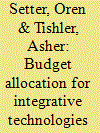

|
|
|
|
|
| Publication |
2007.
|
| Summary/Abstract |
An ever-growing share of defence R&D expenditures is being dedicated to the development and fielding of integrative technologies that enable separate individual systems to work in a coordinated and synergistic fashion as a single system. This study explores the optimal defence budget allocation to the development and acquisition of weapon systems and to the development of integrative technologies. We develop a suitable optimization framework, and then use it to derive the optimal budget allocation and analyse its properties. Finally, we use US defence budget data to calibrate the parameters of the model and provide a quantitative measure for the apparent US military supremacy.
|
|
|
|
|
|
|
|
|
|
|
|
|
|
|
|
| 2 |
ID:
131327
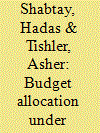

|
|
|
|
|
| Publication |
2014.
|
| Summary/Abstract |
This study presents a framework and models for the analysis of government budget allocation into defense and civilian expenditures in situations of uncertainty about the incidence of war. The models display the intricate relationships between security levels, subjective probabilities of the occurrence of war, and potential war damages. We show that poor countries tend to perceive greater probabilities of war than their richer rivals, and that the psychological burden of insecurity is larger when the country's wealth is larger and when its preference for security is higher. We apply our models to the Israeli-Syrian arms race and show that the higher rate of growth of Israel's gross domestic product relative to that of Syria is expected to lead to an increase in Syria's perception of the likelihood of war and to a decrease in Israel's perception of such a likelihood. We also show that if Syria's regime becomes ideologically more extreme, the monetary cost of maintaining Israel's security at the level that it enjoyed prior to the change will be very high, whereas the monetary cost of maintaining Israel's welfare will be moderate.
|
|
|
|
|
|
|
|
|
|
|
|
|
|
|
|
| 3 |
ID:
153068
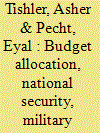

|
|
|
|
|
| Summary/Abstract |
This study develops a dynamic model that integrates military intelligence into the defense capability of the country and the optimal allocation of its government budget. We assert that the effectiveness of the country’s military intelligence is contingent on the quality of its human capital, which, in turn, implies a long-term positive relationship between the government’s various civilian expenditures and its capacity to achieve a cost-effective intelligence and, hence, military capability. This relationship is developed within a multiple-period arms race model between two rivals. Using this model and stylized data for the Israeli–Syrian arms race, we show that an appropriate budget shift from defense to civilian expenditures during the initial periods of the planning horizon will gradually (over a decade, say) increase the quality of human capital in the country and, thus, the effectiveness of its intelligence, which, in turn, will increase the country’s future security and welfare.
|
|
|
|
|
|
|
|
|
|
|
|
|
|
|
|
| 4 |
ID:
069854
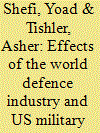

|
|
|
| 5 |
ID:
087000
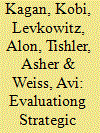

|
|
|
|
|
| Publication |
2009.
|
| Summary/Abstract |
This study evaluates the order of magnitude of the monetary cost of achieving an international strategic limitation agreement on weapons of mass destruction (WMD) in an asymmetric arms race, with applications to the Israeli-Syrian and the North versus South Korean conflicts. It extends the Kagan et al. (2005) framework and develops a model of resource allocation between expenditure on civilian government consumption and on security in a non-cooperative (Cournot) arms race between a developed country and a less-developed country. The model is used to predict the optimal mix of weapons of the two countries engaged in the arms race, and to evaluate the applicability of international strategic WMD limitation agreements. Applying the model to the arms race between Israel and Syria shows that if considered from a purely monetary perspective, such an agreement, in which the monetary transfer to Syria is made by either Israel or a third party, is within reach. A strategic agreement to limit North Korea's WMD is also economically feasible, but only when the monetary transfer to North Korea is shouldered by a third party such as the USA or a coalition of neighboring countries.
|
|
|
|
|
|
|
|
|
|
|
|
|
|
|
|
| 6 |
ID:
100949
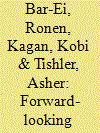

|
|
|
|
|
| Publication |
2010.
|
| Summary/Abstract |
This study presents an analytical model of budget allocation into military and civilian expenditures within an arms race between two rival countries and compares the consequences of shortsighted (period-by-period) planning versus forward-looking (long-term) planning. The authors show that although shortsighted planning is favorable for both countries, they are likely to be locked in a prisoner's dilemma in which both overinvest in arms procurement. The likelihood of overinvestment in arms procurement is higher when the perceived benefit from security is higher and when future benefits from existing arms stocks are ''high''; that is, when the rate of technology improvement over time is lower, the depreciation rate of existing arms is lower and the discount factor is higher. A dynamic version of Kagan et al., employing real-world data, finds evidence for the existence of a prisoner's dilemma in the Israeli-Syrian arms race.
|
|
|
|
|
|
|
|
|
|
|
|
|
|
|
|
| 7 |
ID:
171006
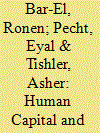

|
|
|
|
|
| Summary/Abstract |
This study evaluates the relationship between a country’s human capital and its capacity to achieve, over time, effective national security. We show that an increase in the importance that a country attributes to its future, and/or in the effectiveness of its education system, leads to a decline in its current civilian services but to increases in its future human capital, civilian services, national security, and social welfare. Data for the Israeli-Iranian arms race confirm our predictions and show that a predilection for short-term political or personal gains impedes investment in human capital and inhibits future economic growth, national security and social welfare.
|
|
|
|
|
|
|
|
|
|
|
|
|
|
|
|
| 8 |
ID:
177824
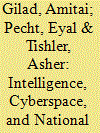

|
|
|
|
|
| Summary/Abstract |
This study evaluates military intelligence as the process of data collection and knowledge development and assessment for decision-making by the military and other governmental agencies. We argue that dominance in modern warfare is enabled by human and technological intelligence that uncovers the rivals’ capabilities and intentions, increases the effectiveness of the country’s own weapon systems, and facilitates the development of high-quality defense systems. Hence, gathering and evaluating intelligence is essential for countries involved in conflict or exposed to terror threats. We focus here on the strategic and tactical implications of intelligence in the context of an arms and intelligence race between two rivals. We present and assess models that show how security agencies in countries in a state of conflict (with other countries and/or non-country entities) should invest in developing their own intelligence capabilities to ensure adequate military (security) capabilities, national security, and welfare. Since advanced cyber attackers can infiltrate almost all complex computer networks to gather intelligence (and/or cause other harms), we show how countries can establish procedures and determine the budgets to optimally allocate cyber-defense resources to prevent harmful cyber-attacks on the complex computer networks that manage their infrastructure, business, security, and government operations.
|
|
|
|
|
|
|
|
|
|
|
|
|
|
|
|
| 9 |
ID:
105811
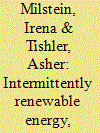

|
|
|
|
|
| Publication |
2011.
|
| Summary/Abstract |
This paper assesses the effect of intermittently renewable energy on generation capacity mix and market prices. We consider two generating technologies: (1) conventional fossil-fueled technology such as combined cycle gas turbine (CCGT), and (2) sunshine-dependent renewable technology such as photovoltaic cells (PV). In the first stage of the model (game), when only the probability distribution functions of future daily electricity demand and sunshine are known, producers maximize their expected profits by determining the CCGT and PV capacity to be constructed. In the second stage, once daily demand and sunshine conditions become known, each producer selects the daily production by each technology, taking the capacities of both technologies as given, and subject to the availability of the PV capacity, which can be used only if the sun is shining. Using real-world data for Israel, we confirm that the introduction of PV technology amplifies price volatility. A large reduction in PV capacity cost increases PV adoption but may also raise the average price. Thus, when considering the promotion of renewable energy to reduce CO2 emissions, regulators should assess the behavior of the electricity market, particularly with respect to characteristics of renewable technologies and demand and supply uncertainties.
|
|
|
|
|
|
|
|
|
|
|
|
|
|
|
|
| 10 |
ID:
192046
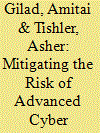

|
|
|
|
|
| Summary/Abstract |
Modern countries employ computer networks that manage organizations in the private and public sectors. Cyber-attacks aim to disrupt, block, delete, manipulate or steal the data held in these networks, which challenge these countries’ national security. Consequently, cybersecurity programs must be developed to protect these networks from cyber-attacks in a manner that is similar to operations against terrorism. This study presents several models that analyze a contest between a network operator (defender) that deploys costly detectors to protect the network and a capable cyber attacker. Generally, when the deployed detectors become more potent or the defender exhibits higher vigilance, the attacker allocates more resources to R&D to ensure that the attack remains covert. We show that detectors may be substitutes, complements, or even degrade each other, implying that defenders must account for the cyber weapons’ characteristics and the attacker’s profile and strategic behavior. We derive the optimal number of detectors when the attacker’s R&D process features R&D spillovers and show that targeted detectors act as deterrents against high-quality weapons only if the attacker’s budget is not substantial. Finally, we demonstrate that common cybersecurity practices may be detrimental from a social-welfare perspective by enhancing an arms race with the attacker.
|
|
|
|
|
|
|
|
|
|
|
|
|
|
|
|
| 11 |
ID:
123166
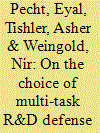

|
|
|
|
|
| Publication |
2013.
|
| Summary/Abstract |
Investments in R&D constitute a major share of the expenditures of the hi-tech industry since, generally, they enable firms to successfully compete in the rapidly and constantly changing markets for hi-tech products and services. The role of R&D projects is particularly important in the areas of defense and homeland security due to the nature of warfare and the continuous threats posed by arms races and by terror organizations. This study analyzes the choice of the R&D projects designed to counter multiple related military threats. It develops the methodology required to assess whether it is preferable to develop one project to thwart several related threats, or several distinct projects, each of which provides an answer to one specific threat or a partial set of the threats. An analytic solution is provided and assessed for two simple models with two related threats. A solution of the model is then provided for any number of related threats, using a dynamic programming methodology. Finally, we demonstrate the usefulness of our model and methodology to Israel's missile defense problem; that is, we show how to optimally develop systems aimed at thwarting the multiple threats of short-, medium-, and long-range missiles.
|
|
|
|
|
|
|
|
|
|
|
|
|
|
|
|
| 12 |
ID:
069847
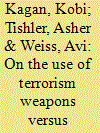

|
|
|
| 13 |
ID:
057596
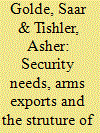

|
|
|
| 14 |
ID:
053911
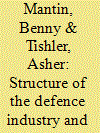

|
|
|
| 15 |
ID:
136959
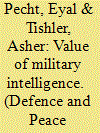

|
|
|
|
|
| Summary/Abstract |
This study evaluates the role of military intelligence in an arms race between two countries. The intelligence apparatus of each country evaluates the rival’s capabilities and intentions, and enhances its military capability by increasing the effectiveness of its own weapon systems and reducing the effectiveness of the rival’s weapon systems. Intelligence superiority also yields an advantage in deterrence and preemption. This study shows the following. (a) Investment in intelligence is much less beneficial for small government budgets, low intelligence efficiency, and a low degree of conservatism on the part of the policy-maker. (b) The expenditure on intelligence increases when intelligence efficiency is low and rising, and decreases when intelligence efficiency is high and rising. (c) Being very conservative may be costly to the country. (d) High-quality human capital substantially improves the country’s security and welfare, particularly when the rivals are engaged in a knowledge race in addition to the usual arms race. An application of the model to the Israeli–Syrian arms race demonstrates its validity and usefulness.
|
|
|
|
|
|
|
|
|
|
|
|
|
|
|
|
|
|
|
|
|